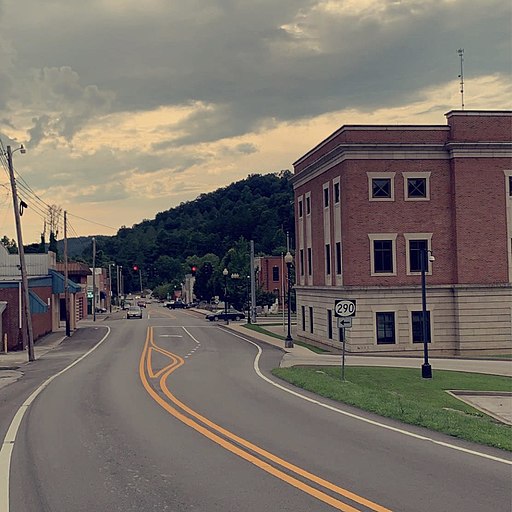High-Speed Internet in a Post-Pandemic Life
For those of us who live in urban or suburban areas, navigating life without high-speed internet is truly unthinkable. How tough would life have been if the internet had not been around during the pandemic? Just a fair bit of research on previous pandemics will leave you feeling deeply grateful.
A year and a half after the world found itself in the throes of COVID 19, we can hope that the worst is behind us. But who can forget all the time that was spent checking online news portals, blog posts, and Twitter feeds?
Working and Studying During the Pandemic
Many found themselves working day in and day out. With a sudden shift to work-from-home situations, workdays seemed unending, and online classes became the norm for students across the country. Owing to this, internet use went up by as much as a whopping 50%.
Moreover, it was found that on average, each household accessed upwards of 480 gigabytes worth of data. For context, that’s almost as much data as would be required to stream videos and shows 24 hours a day for 10 continuous days.
Because everyone was getting online for work and school, the internet couldn’t keep pace for long. There were visible signs of a burgeoning pressure where pages took forever to upload, websites crashed, and video calls kept getting disconnected.
COVID-19: Has it Made the Internet Stronger?
President Biden’s proposed infrastructure plan includes an investment of $100 billion for the sole purpose of bringing high-speed internet to areas deprived of the benefits it affords. The inference that stronger internet services in certain areas of the country could have helped navigate the pandemic in a better way is likely to be correct.
In Kentucky, for instance, we even learned that installing fiber connections comes with other positives as well–the first of those being an increase in employment. It’s important to mention here is the fact that even though the area’s top employer folded due to the pandemic, employment continued to increase at a steady pace.

Themattybt, CC BY-SA 4.0, via Wikimedia Commons
Sixty-three miles southeast of Lexington sits Jackson County, one-fourth of which is Daniel Boone National Forest. Its county seat is McKee, population 1200. For an area where households are sparse, it sounds almost unbelievable that it could boast about its high-speed internet. But the internet facilities in Jackson County could put some sprawling metropolises to shame. This region is a key example when it comes building a case citing the relevance and importance of high-speed internet across all states of the country.
Leading the Charge: National OnDemand
Al Haefner, Director of Operations, Construction Division is of the view that work has only just begun, and that “It’s a very exciting time. It’s been a long time since the industry had more work. You have a feeling that there’s more work to be done in the industry than there are people to do the work.”
National OnDemand has played a pivotal role in providing high-speed internet and jobs to rural America before and during the pandemic.
The Aerial Lineman Training Center
To that end, the company also launched a training program at the Aerial Lineman Training Center. The purpose of this program is to furnish employees with the experience necessary to fuel their learning and growth within the industry. This is precisely the kind of novel idea that has helped National OnDemand become a front-runner in the industry.

Forward-Thinking Management
Even while the pandemic was raging full speed ahead, the team at National OnDemand knew exactly what was needed on the ground. There were hardly any hiccups when it came to training employees. In July 2021, the company was in the midst of a 3,000 mile fiber project that would provide broadband access to residents of eastern Texas.
According to Bob Powell, Vice President of Operations, Construction Division, this was an initiative that National OnDemand took to equip rural towns and areas with high-speed internet.
Setting an Example
According to Ivan Orellana, local manager of the East Texas Fiber Project, this difference in thinking is what sets the company apart from others, who at the time at least, were not prioritizing the same. He goes on to further state that it was a missed golden opportunity for other companies, and National OnDemand did the right thing by recognizing it and jumping on it without wasting any time.
Bob Powell also mentions how high-speed data does not just benefit members of electric co-ops. More and more teachers relied on online classes and online homework, and whether online options for school continue post-COVID remains to be seen. Naturally, in the absence of high-speed internet, the progress of students is likely to suffer. He recognizes this as one of the most important benefits of high-speed internet–that students should be able to get the level of education they deserve, without any obstacles in their path.
Of course, the benefits don’t stop at students. “Farmers could also leverage that connection, and leverage technology that would be available to them online that they can’t access now.”
The core idea is to mobilize a community and help them move forward by granting them the myriad opportunities that comes with having access to high-speed internet.
In short, high-speed internet is now far from a luxury. The fact that it is a necessity was highlighted even more so when the pandemic blew us all out of the water. Even in the face of COVID-19, National OnDemand has continued in their mission and their steps have not faltered. For more information on how National OnDemand is upfitting the country post-pandemic, contact marketing@nationalondemand.com.
